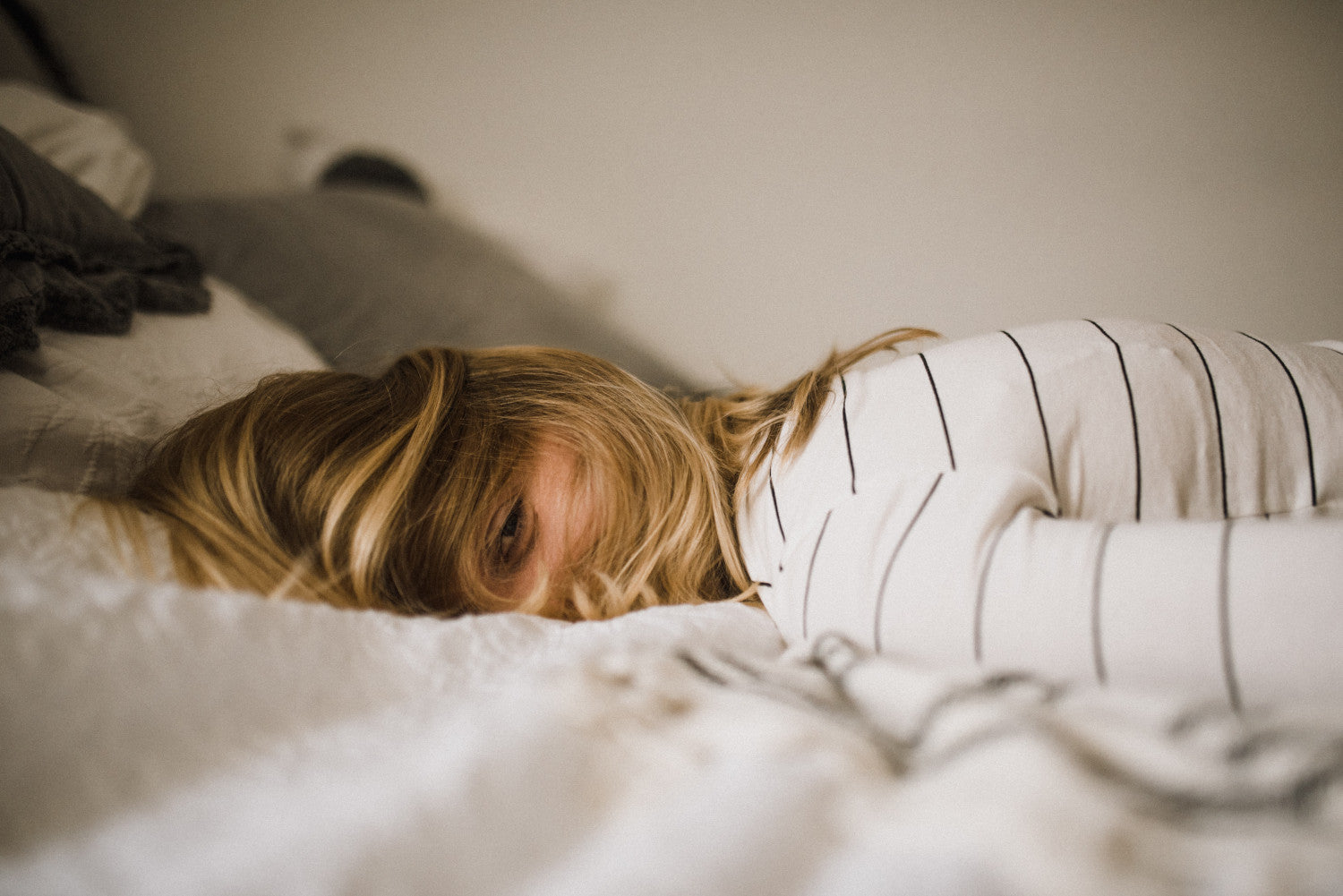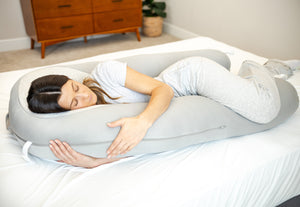Napping isn’t easy for everyone. Many people struggle to nap and ask, “Why can’t I take naps during the day?”. If this sounds like you, don’t stress any longer. We have the answers to your napping struggles in this complete guide!
Few people can lie down, close their eyes, and fall asleep within seconds. And a lot of people out there wish they could do that! There are a few factors that may affect your body’s ability to settle down and relax for sleep - leading to napping during the day feeling impossible.
Soon, you’ll have a better understanding of what may be affecting your ability to nap and how to fix these problems. Before we can address the question you came here with - why can’t I take naps when I’m tired? - let’s start with a quick overview of why napping is so important.
Why Naps are an Important Part of Your Daily Routine
Naps boast many benefits. In fact, sleep experts recommend that they be added to your daily routine!
Sleep plays a crucial role in a person’s overall health and quality of life. Deficient sleep can result in low physical and mental functions, lowering the body’s immune defenses and raising the risk of chronic disease. Naps are an excellent opportunity to catch up on lost sleep, recover from a long day, and reduce stress.
Setting aside time to take a quick cat nap can have many other advantages, too. Naps can improve performance, reduce fatigue, reduce stress, and improve mood so that you are more focused and engaged throughout the day.
A lack of alertness and focus throughout the day can be detrimental to your work day and relationships. By napping, you are effectively reducing fatigue and increasing alertness to improve performance at work and other aspects of your daily routine.
So - Should I Take Naps?
If you’re questioning whether you even have the time to take naps, know that setting aside 15-30 minutes out of your day to settle down, close your eyes, and take a nap can be great for you.
With that said, it is not recommended to consistently exceed 45 minutes when napping daily, as it has been linked to an increase in the risk of type II diabetes.
A power nap that settles between 15-45 minutes has been shown to improve memory, reduce fatigue, and boost performance, and it has been likened to a cup of coffee with its energy boost. Big names like Google and NASA give workers time to incorporate nap time into their daily schedules!
So, Why Can’t I Take Naps During the Day Anymore?
You now see the benefits of napping, but you still struggle to incorporate them into your life. Why can't I take naps anymore, you ask? If you struggle with napping during the day, there are a few potential reasons why. Keep reading to find out what's causing your napping woes!
You Aren’t Relaxing Or Breathing Properly
For the beginner napper, trying to settle down to take a nap can be difficult.
Your brain won’t stop thinking. You keep focusing on what else needs to be accomplished that day, and all that needs to get done. You start to panic a little because what if you don’t have enough time to finish it? What if you don’t wake up in time?
First off, take a moment to inhale a deep breath. Hold it for two seconds. Then, slowly release it.
Napping is all about relaxing, and one of the best ways to refocus the mind to settle down for a nap is breathing correctly. If you are concerned about spending too much time napping or not waking up in time to get the rest of the day’s task accomplished, set an alarm (or two) before settling down to nap.
When settling down for a nap, it's commonplace to get distracted and find your mind straying. If you struggle to settle down, focus on relaxing your body, from your fingertips to your toes, and breathing. In. Out. In. Out.
If that doesn’t work, try box breathing, used by Navy SEALS, nurses, athletes, and police officers as a surefire way to reduce stress, meditate, and relax. This method uses a breathing pattern involving a 4-second inhale, 4-second hold, and 4-second exhale. Do this repeatedly, focusing on each breath as you count, to help relax and fall asleep.
Your Napping Position & Location Is Not Ideal
Positioning during naps equates to quality of rest. It has been discovered through a study that napping position is key to improved alertness post-nap. The study compared nappers that slept on a chair and on a bed. Nappers that rested on a bed had much more significant benefits physiologically and subjectively than nappers that slept in a chair.
It is recommended to sleep on your back when taking naps on a bed to keep spinal alignment, evenly distribute weight, and prevent any aches or pains. If propped in an upright position, laying on your back can relieve congestion or allergies for those struggling with nasal congestion. In addition, napping on your back can prevent any neck or back pain that may be induced in other positions that can initially be comfortable but, over time, can cause issues, aches, and pains in the neck or back.
The Temperature Is Too Hot
Connections between temperature and sleep quality have been shown. However, sleeping when it is warm and not cool enough is a struggle for more than a few people.
Overall, sleep quality has been shown to improve when temperatures are cooler. Body temperatures drop when it’s time to rest at night. Lowering the thermostat temperature reinforces the body’s natural instinct to sleep. If the room is too hot, you may find yourself restless. Higher temperatures can affect REM (rapid eye movement) sleep as the body’s temperature rises, affecting the sleep initiation process.
Next time you try to nap, lower the temperature to 70° F or below to test whether the room temperature affects your ability to rest.
You Aren’t Drinking Your Coffee At The Right Time
Have you ever heard of a coffee nap? It’s taking the napping world by storm with its added benefits of increased alertness and performance post-nap!
For obvious reasons, many people don’t consider combining sleep and coffee. Yet, it’s been discovered that drinking coffee pre-nap can improve alertness, perception, and performance post-nap compared to those who only take a nap.
Although caffeine is a stimulant, the high quantities of caffeine that replace adenosine can make the body feel tired initially. However, as naps clear adenosine from the brain, napping post-coffee consumption can clear adenosine from the brain to allow caffeine to connect with brain cell receptors effectively. This results in heightened alertness post-coffee nap!
The Noise Levels Are Inconsistent
Room acoustics can play a prominent role in one’s sleep quality for sensitive sleepers. Therefore, avoiding loud or reverberating environments as a sensitive sleeper is highly recommended to encourage better sleep quality.
Consider using apps to listen to white noise or relaxing music in an environment with inconsistent sounds. Jarring and abrupt sounds can jolt you awake, so it’s best to avoid these environments or use noise-canceling headphones to incorporate silence or sounds that you find relaxing.
What Can I Do Take Naps & Unlock all the Benefits They Offer?
Are you looking to improve your napping? Then, you need to check out these beneficial tips to unlock the benefits of napping!
Invest in an Ultra-Comfy Human Dog Bed for Napping!
Specially designed to alleviate stress and anxiety in a place of maximum comfort, Plufl has created the ultimate napping product: a human dog bed!
Made with built-in pillow bolsters and a soft faux fur cover, this product was inspired by the classic dog bed. Viral on TikTok, our human dog bed is perfect for cradling into a supported fetal position, where you can tuck your hands and feet inside for sensory relief. If desired, you can elevate your feet on the thick pillow bolster for reduced tension and increased blood flow.
The ultra-comfy human dog bed is the perfect napping environment for maximum comfort, sensory relief, and support for the best naps of your life!
Find An Ideal Napping Environment
A few factors go into finding the ideal napping environment. Finding the ideal napping environment can be difficult for some people, from the napping position to what you sleep on and where you rest.
Tools like noise-canceling headphones, Plufl’s human dog bed, and lavender pillow sprays are all excellent tools to create an ideal napping environment. Other sensory aspects, like sound, can affect a person’s sleep. If you notice a particular sensory issue bothering you when you try to nap, try investing in some of our recommended tools to improve your napping environment.
Try Adding Scents For Better Sleep
Lavender is a known natural remedy to help treat insomnia and improve sleep quality. If you enjoy scents or struggle to sleep, try spraying a lavender spray on your pillow or blankets to improve your overall sleep quality.
Other scents include bergamot, sandalwood, chamomile, jasmine, and rose. You can make your own DIY sleep-time pillow spray. Using essential oils of these scents along with water and a few drops of witch hazel, add them into a spray bottle for your DIY pillow mist!
Invest In Noise Canceling Headphones
As discussed above, if you are a sensitive sleeper, it may be best to invest in noise-canceling headphones. In addition, there are noise applications on your phone that can make finding sounds that can encourage sleep easier.
Listening to white noise has been shown to significantly improve sleep quality, especially for those that struggle with sleeping due to environmental noise. On the other hand, pink noise was shown to reduce brain wave complexity, resulting in more stable and deep sleep.
Try listening to white or pink noise to determine their effectiveness on your sleep quality to unlock the benefits of napping.
Work On Your Breathing Technique
Breathing techniques are mastered by Navy SEALS, athletes, and other professionals for various purposes. So, why not use it to fall asleep faster?
Incorporating breathing techniques into your nap time can drastically improve how quickly you fall asleep by helping you relax faster. So next time you take a nap, try the 4-7-8 or the box breathing technique to determine how it can assist you in more efficient napping.
Why Can’t I Take Naps Anymore? Wrapping Things Up
In this article, we answered the question, “Why can’t I take naps when I’m tired?”. As you now know, there are quite a few factors that go into settling down for a nap, which is why most people struggle with napping.
Creating the ideal napping environment can determine how efficiently your body can settle down and relax to fall asleep. From sound to smell, many sensory factors can encourage or discourage the body from resting. Plufl’s human dog bed is the perfect answer to your sensory issues. Masterfully designed to provide an ultra-comfortable environment that reduces stress and anxiety, our human dog bed is the answer to your napping troubles.



